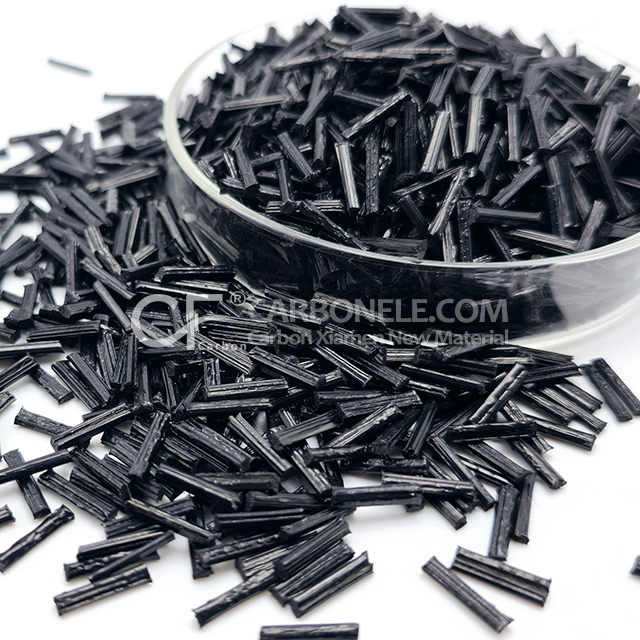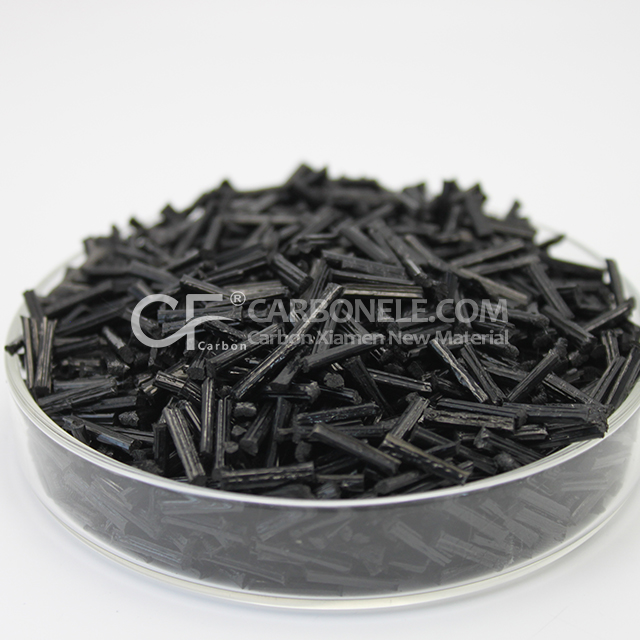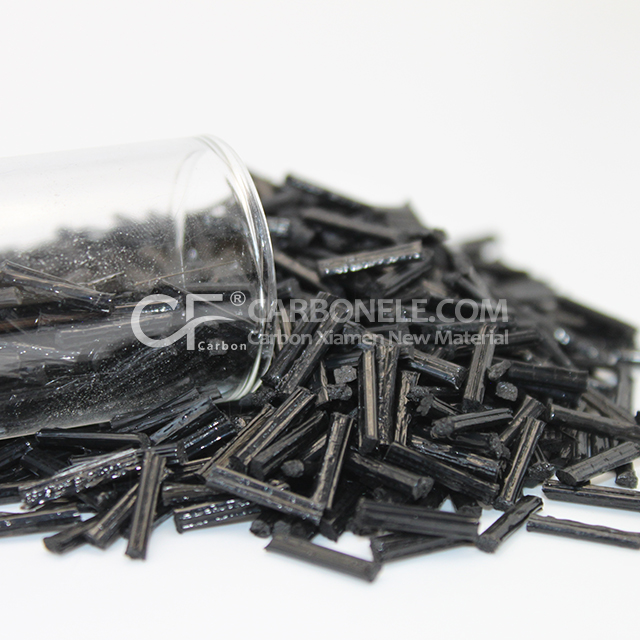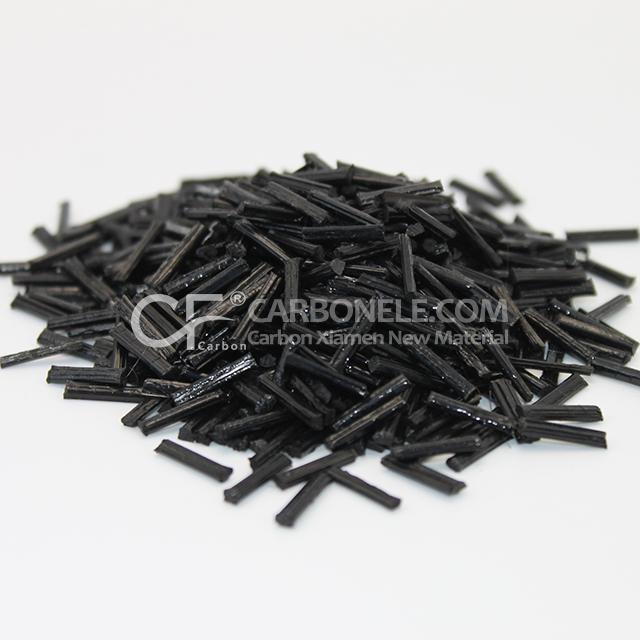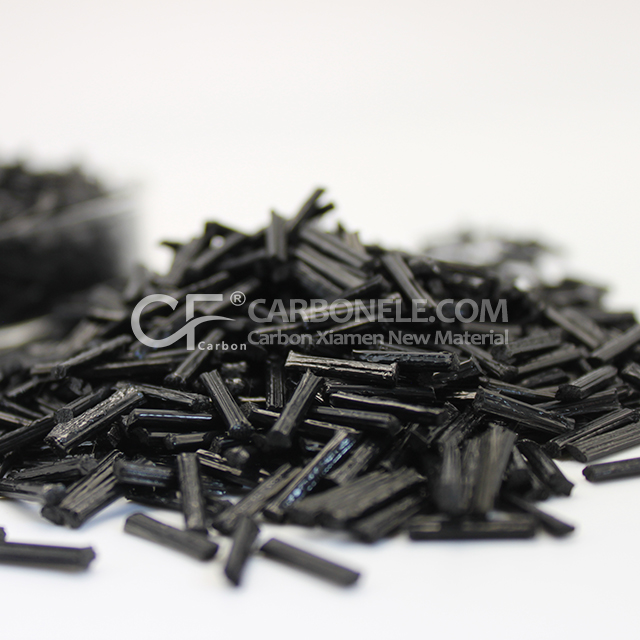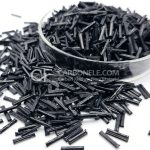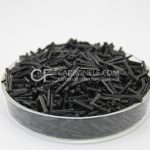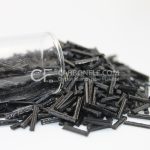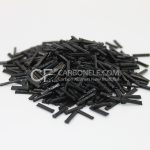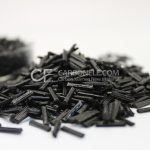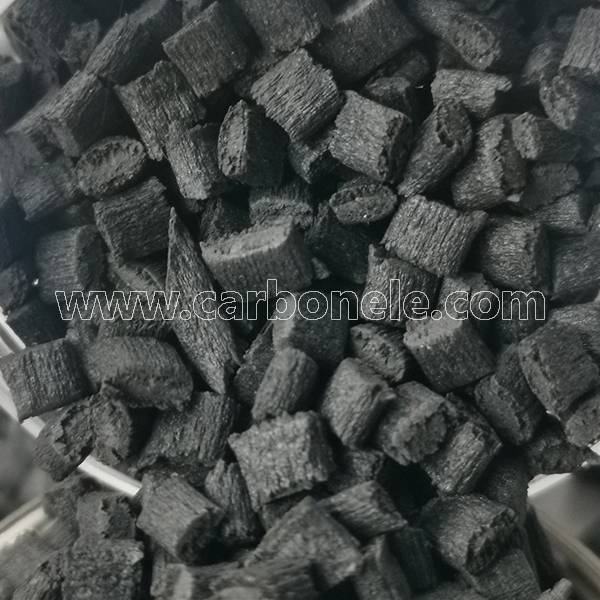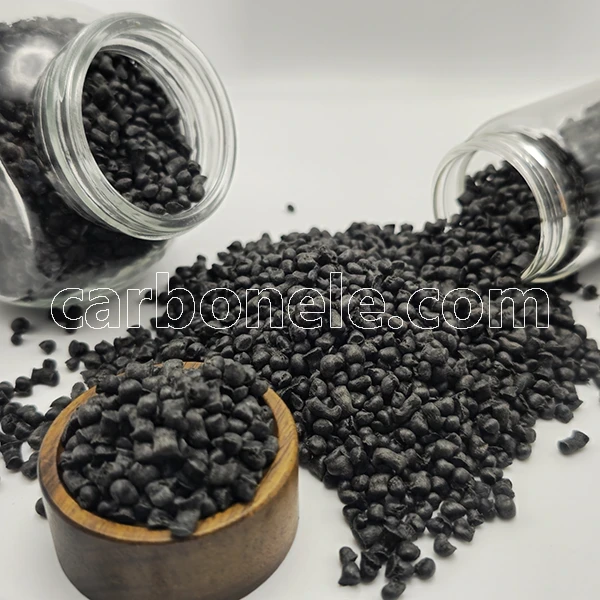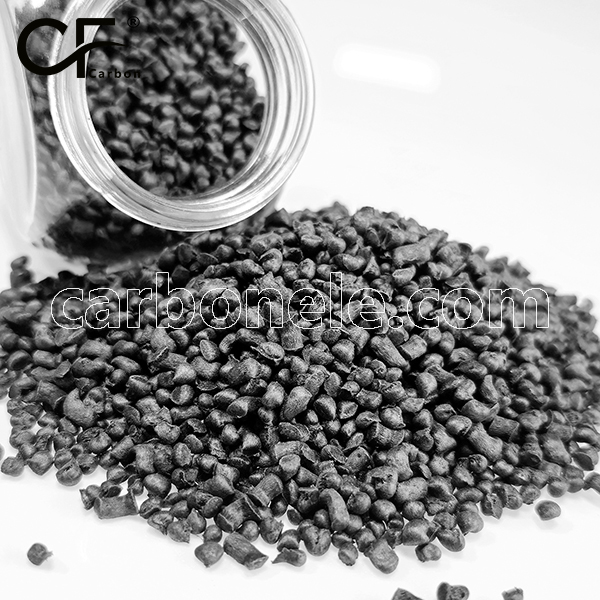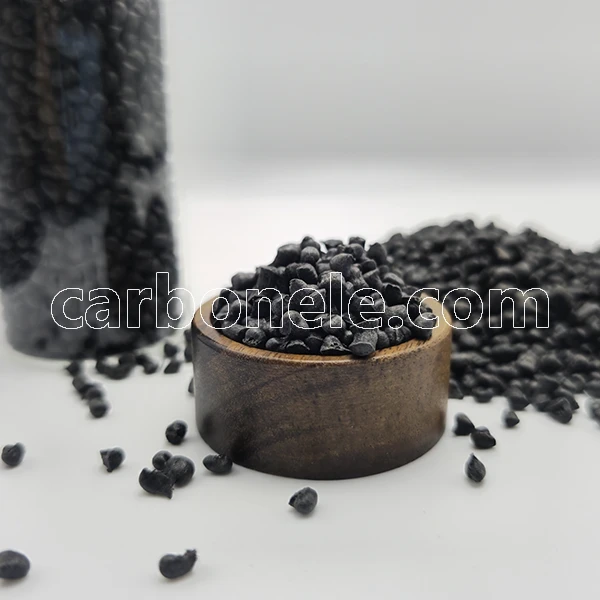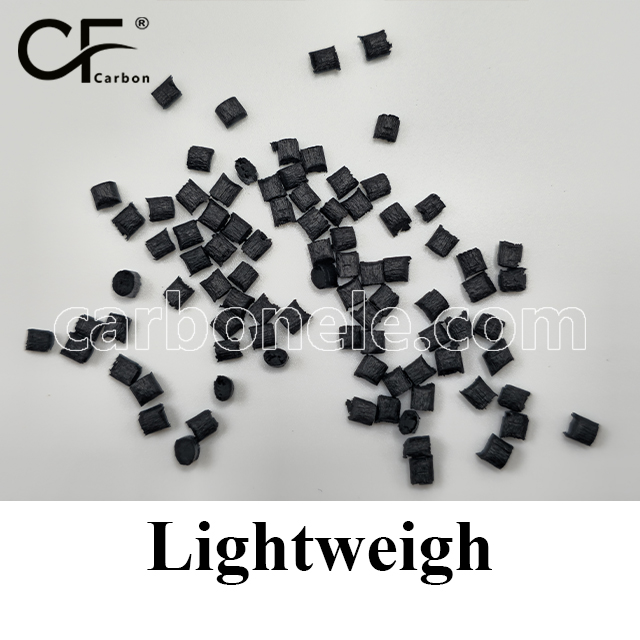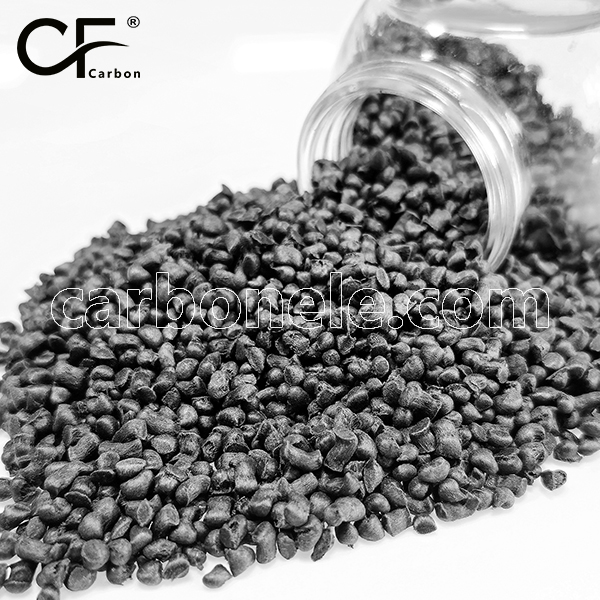
TPU-CF30: The Missing Ingredient in Your Failing Flexible Parts
Discover TPU-CF30—carbon fiber reinforced TPU that solves flexible part failures with added strength, durability, and dimensional stability for advanced applications.
- Model number: TPU-CF-BCA3
- Matrix Resin: Thermoplastic polyurethane (TPU)
- Reinforcing Filler: Carbon fiber
- Appearance: Granules
- Grade: Injection/extrusion grade
- Packaging: 25kgs/bag
TPU-CF30: The Missing Ingredient in Your Failing Flexible Parts
Flexible parts often fail under real-world pressure—not because the design is flawed, but because the material simply cannot keep up. That’s where TPU-CF30 steps in. This carbon fiber-reinforced thermoplastic polyurethane delivers the perfect balance of flexibility and mechanical strength, solving issues that traditional flexible materials struggle with.
Whether you are producing parts for protective gear, wearable technology, or high-performance sports components, TPU-CF30 delivers unmatched structural integrity while maintaining the elasticity needed for dynamic applications.
Why Flexible Parts Often Fail in Demanding Conditions
Flexible plastics such as standard TPU are chosen for their softness and elasticity. But in high-load environments or when exposed to repeated stress, they often deform, crack, or simply wear out too quickly. If you’ve been dealing with these issues in your product line, it’s likely not a design flaw—it’s a material limitation.
TPU-CF30 was developed specifically to overcome these weaknesses. By integrating long carbon fiber reinforcement into the TPU matrix, this material maintains essential flexibility while adding stiffness, durability, and resistance to fatigue.
Application Highlight: Custom Protective Phone Cases
Imagine you’re designing a rugged phone case intended to absorb shock and protect devices from repeated impact. Standard TPU may offer a smooth feel and flexibility, but over time, the corners can stretch out, edges warp, and the case may lose its structural support. Now substitute that with TPU-CF30.
With TPU-CF30, your case maintains its form while flexing just enough to protect from drops. The added strength means it can absorb repeated impacts without changing shape or cracking. This makes it ideal for military-grade cases, industrial handheld enclosures, or even high-end consumer designs where durability meets elegance.
Key Advantages of TPU-CF30 in Real-World Manufacturing
Enhanced Structural Integrity Without Sacrificing Flexibility
TPU-CF30 gives you more than just a tougher version of standard TPU. It brings rigidity where needed and flex where function demands it. Whether you are overmolding handles, producing wearable bands, or building equipment housings, the carbon fiber reinforcement prevents unwanted deformation and adds reliability to the finished product.
Improved Dimensional Stability Under Load
In fast-paced environments—like automotive interiors or performance gear manufacturing—parts must retain their shape even when compressed, twisted, or flexed. TPU-CF30 maintains dimensional stability over time, ensuring that your parts perform just as well after months of use as they did when new.
Higher Load-Bearing Capabilities for Precision Components
If your project involves clips, joints, flexible brackets, or vibration-absorbing components, TPU-CF30 gives you the freedom to design with confidence. It allows for sleek, lightweight designs without the need to oversize parts just to avoid failure. You get strength and resilience without compromising on design freedom.
Use TPU-CF30 to Push Your Product Potential
Designed for Advanced Applications
TPU-CF30 is widely adopted in industries that demand high performance and reliability. From 3D printed parts for aerospace to wearable accessories in sports and healthcare, the material adapts well to various processing methods including injection molding and fused filament fabrication. It’s also suitable for hybrid assemblies where both flexibility and rigidity are required in a single unit.
Material Flexibility Meets Design Freedom
Designers and engineers are often forced to choose between soft, flexible parts or stiff, reliable ones. TPU-CF30 eliminates that compromise. Its adaptable nature allows you to create ergonomic forms that feel comfortable yet withstand demanding environments, all while offering a high-end appearance and superior functionality.
Who Should Consider TPU-CF30
-
Product designers frustrated by the limits of standard TPU
-
Manufacturers of consumer goods needing higher durability in flexible parts
-
Developers of industrial equipment requiring long-lasting seals or bumpers
-
Brands seeking a premium feel with added mechanical resilience
-
Innovators looking to balance strength, weight, and flexibility in one material
Whether you’re working on sports equipment, rugged electronics, drone components, or flexible brackets, TPU-CF30 is the smart upgrade that ensures your parts hold up where others fall short.
Conclusion: Don’t Settle for Flexible Parts That Fail
Your product is only as good as the materials behind it. TPU-CF30 isn’t just a carbon fiber-infused plastic—it’s a solution to a long-standing performance gap in flexible materials. It empowers you to build smarter, stronger, and more reliable products without redesigning your entire system.
If your flexible parts are failing, the missing ingredient might not be in the geometry. It might be in the material. Try TPU-CF30 and experience the difference where it matters most—in performance, durability, and user trust.
If you want to get more information , you can visit our Youtube.
Friction coefficient of TPU-CF
The friction coefficient of TPU is typically between 0.3 and 0.5, while TPU-CF, with added carbon fiber, lowers the friction coefficient to between 0.2 and 0.4. The smaller the value, the better the wear resistance. Therefore, TPU-CF generally offers better wear resistance than pure TPU, especially under high-load conditions.
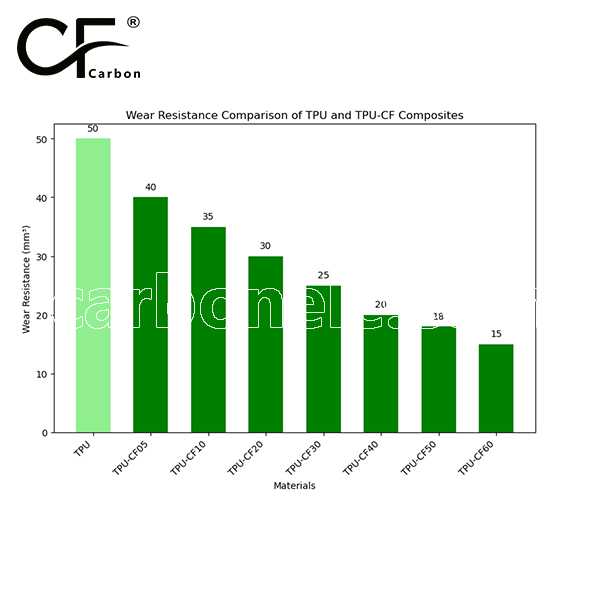
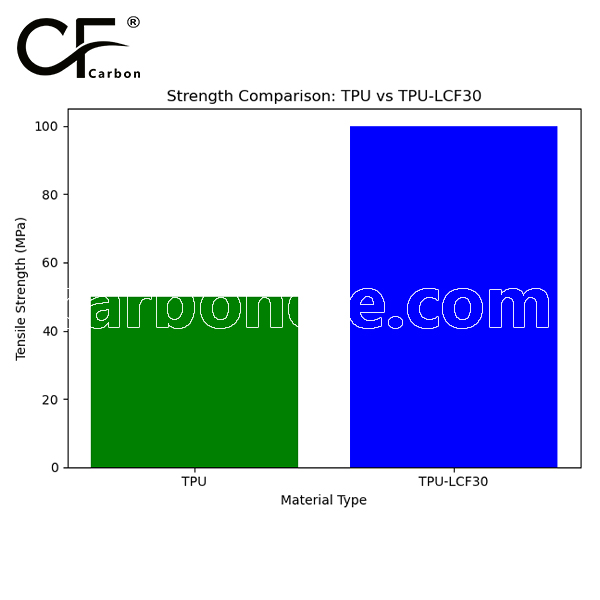

Frequently Asked Questions
Carbon (Xiamen) New Material Co., Ltd. aims to provide buyers with "one-stop" worry-free high-quality services. Here you can find all information about carbon fiber engineering plastics. If you still have questions, please send us an email for consultation!
-
How can I contact the manufacturer of a product that interests me?
When you find a product you are interested in, you can contact the manufacturer directly by sending an email and we will get back to you as soon as possible.
-
How do I find the products that interest me?
All you need to do is enter the keyword, product name in the search window and press the Enter key on your keyboard. Your search results page will then be displayed. You can also search within the product category pages on the home page. Each category is divided into subcategories, allowing you to refine your search and find products that interest you.
-
Where will I find a buying guide?
Please contact our after-sales service directly and we will provide you with a comprehensive operating guide.
-
What are CF Reinforced Thermoplastic Composites?
CF Reinforced Thermoplastic Composites are materials where carbon fibers are incorporated into a thermoplastic matrix. They combine the strength and stiffness of carbon fibers with the processability and recyclability of thermoplastics. For instance, they are used in automotive parts like bumper beams.
-
What are the benefits of CF Reinforced Thermoplastic Composites over traditional composites?
The key benefits include faster production cycles, easier recyclability, and better impact resistance. They also offer design flexibility. An example is in the manufacturing of consumer electronics casings where complex shapes can be achieved more easily.
-
How are CF Reinforced Thermoplastic Composites processed?
Common processing methods include injection molding, extrusion, and compression molding. Injection molding is widely used for mass production. For example, in the production of small components for the medical industry.
-
What industries use CF Reinforced Thermoplastic Composites?
They are utilized in aerospace, automotive, medical, and sports equipment industries. In aerospace, they can be found in interior components. In the medical field, they might be used in prosthetics.
-
How does the carbon fiber content affect the properties of the composites?
Higher carbon fiber content generally leads to increased strength and stiffness but may reduce ductility. A moderate content is often balanced for specific applications. For example, a higher content might be preferred in structural parts of a race car.
-
What are the challenges in using CF Reinforced Thermoplastic Composites?
Challenges include higher material costs, complex processing equipment requirements, and ensuring uniform fiber dispersion. Issues with adhesion between the fibers and the matrix can also arise. An example is in achieving consistent quality in large-scale production.







